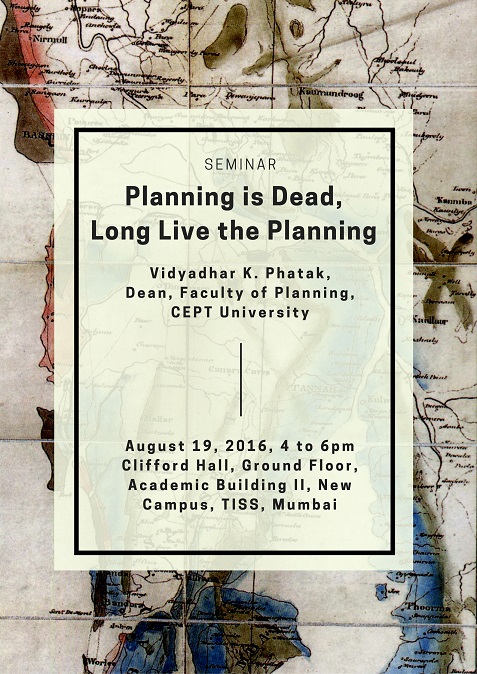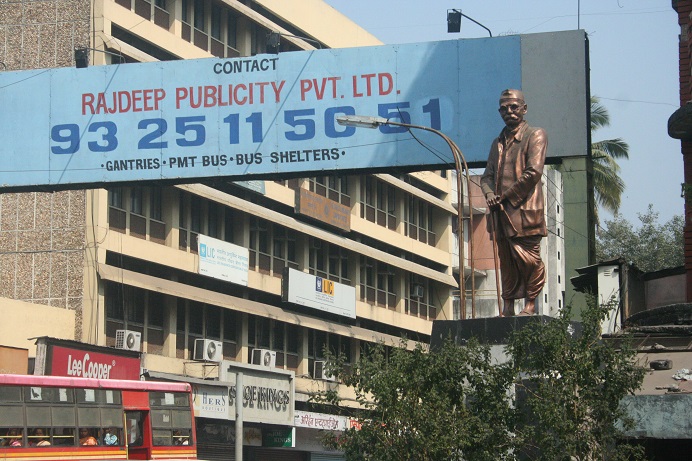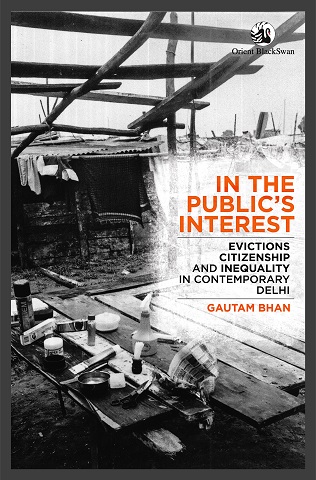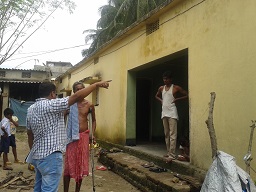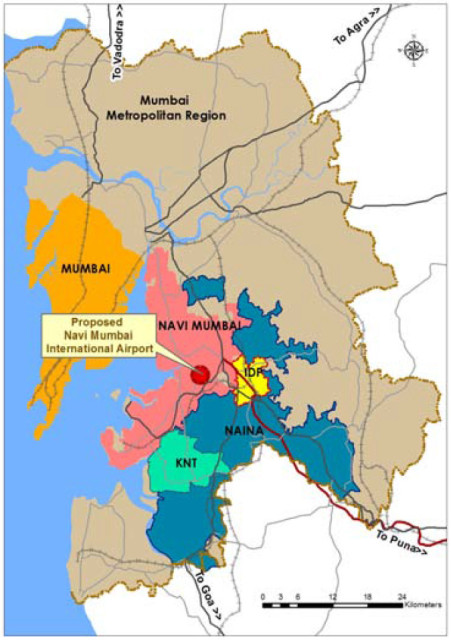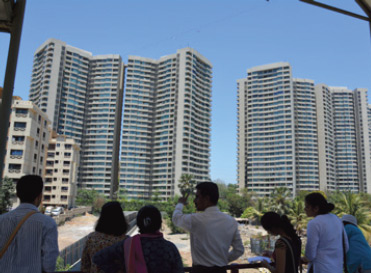
Watch this space to learn about more about upcoming seminars by academicians, policymakers, activists and those engaged in thinking about the urban
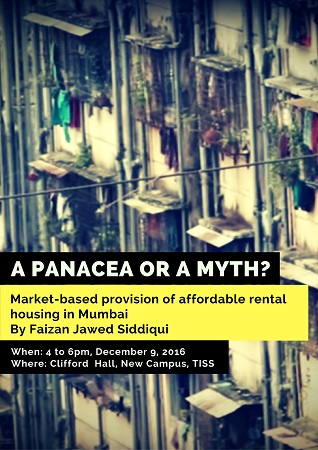
A Panacea or a Myth? Market-based Provision of Affordable Rental Housing in Mumbai
By Mr Faizan Jawed Siddiqui, doctoral student at MIT
When: 4 to 6pm, December 9, 2016
Where: Clifford Hall, Ground Floor, Academic Building II, New Campus, TISS, Mumbai
Since the publication of the “Housing: Enabling Markets to Work” report by the World Bank in 1993, many developing country governments have turned to market-based schemes to deliver affordable housing. India is no exception. As part of the broader on-going economic reforms, in the housing sector, the Indian government has been developing market-based affordable housing schemes. Two important assumptions underpinning these schemes are that private developers know where the demand is and that they will respond with housing supply to meet the demand fairly quickly. The validity of these assumptions gains critical importance especially when a large number of urban poor are to be housed through these housing schemes.
Given the relative newness of this approach, literature on the working of such schemes in India is thin. This paper presents the first detailed case study of the working of a large-scale market-based affordable housing scheme in Mumbai, India. This scheme uses Floor Area Ratio (FAR) incentives to attract private developers in the Mumbai region to develop housing projects, part of which the state requires be handed to the city planning authority for use as affordable rental housing units.The main findings of this paper are that while the scheme has been able to attract large private developers to build housing, much of it has come up in far-flung, peripheral areas that presented opportunities for developers to make windfall gains. Many of these locations currently do not have basic infrastructure provision. Developers are confident that middle class buyers will buy these apartments as investment. For the poor, however, the rental units are not livable because of missing infrastructure like transportation, water and sanitation. Further, the rental housing unit size stipulated under the scheme has created such high housing densities that local city governments declared it impossible to provide infrastructure. As a result, the maximum FAR increase was lowered by the government. This change reduced the profitability of projects under this scheme and has made the developers lose interest.
More fundamentally, this case shows that the critical assumptions underpinning a market-based scheme do not hold true in some markets (like Mumbai). Developers do not necessarily look for short-term gains, which is a problem when the government is interested in immediately housing the poor. The government will have to undertake a stronger regulatory role. Making location decisions for development of affordable housing is one parameter that needs to be strongly regulated.
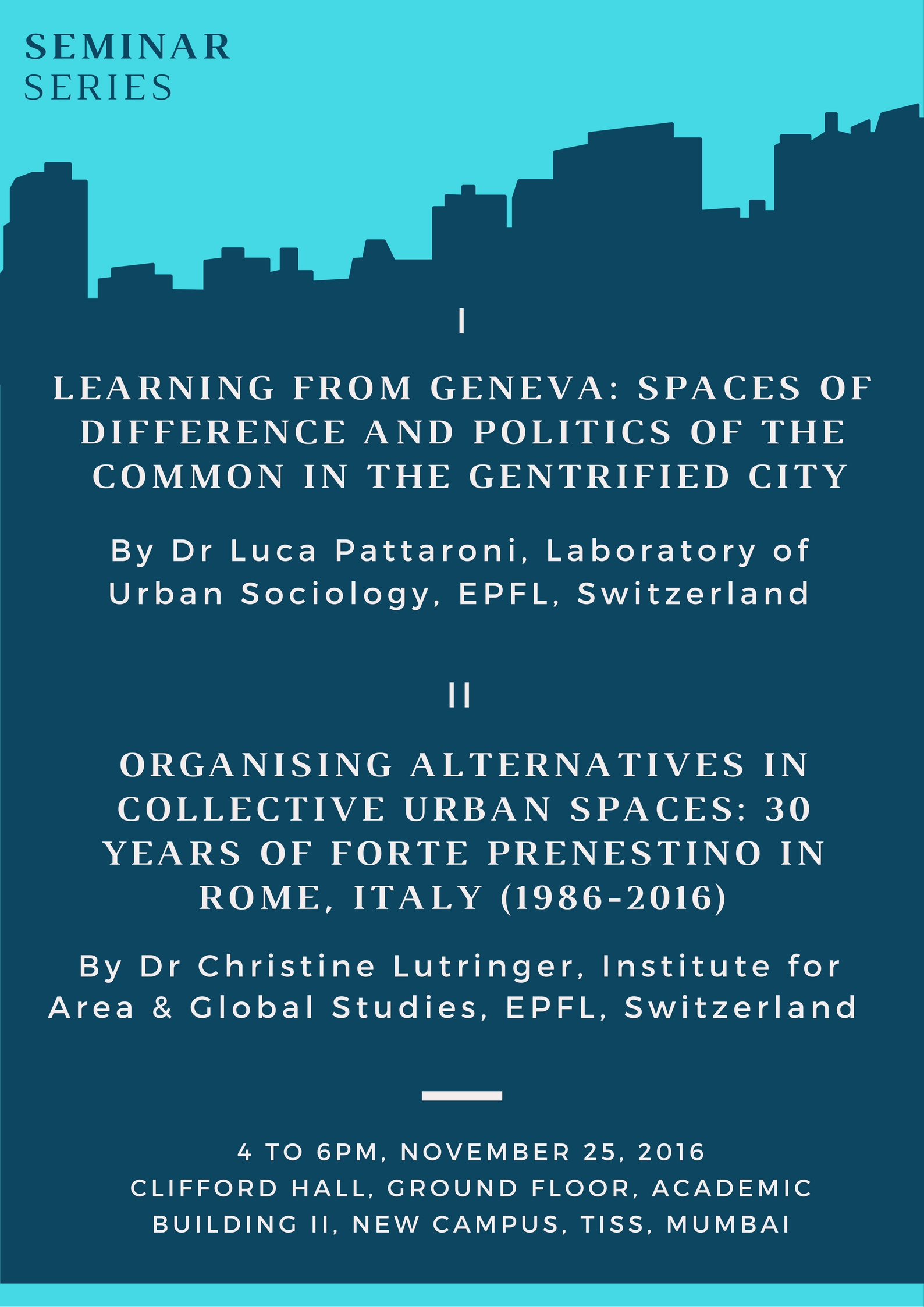
Organising alternatives in collective urban spaces: Thirty years of Forte Prenestino in Rome, Italy (1986-2016)
By Dr. Christine Lutringer
When: November 25, 2016, 4 to 6pm
Where: Clifford Hall, Ground Floor, Academic Building II, New Campus, TISS, Mumbai
The Forte Prenestino in Rome is a Centro Sociale, in other words a Social Centre occupied by a community group. These collective spaces have been markers of urban territories throughout Italy since the early 1980s. Self-financed and self-managed, they are located in abandoned buildings that are illegally occupied by young people and political activists. Seen as sites for resistance to neoliberal capitalism, they are often considered as ‘headquarters’ of a new oppositional movement. However, they have also engaged with the public at large, organising cultural activities as well as the provision of social services. This lecture will explore this double dynamics and examine the different modes of engagement with the city through the history of the occupation of this historical Fort. In particular, we will discuss how creative engagement with ideas and practices of ecological sustainability and responsible consumption has reshaped its relation with the public.

